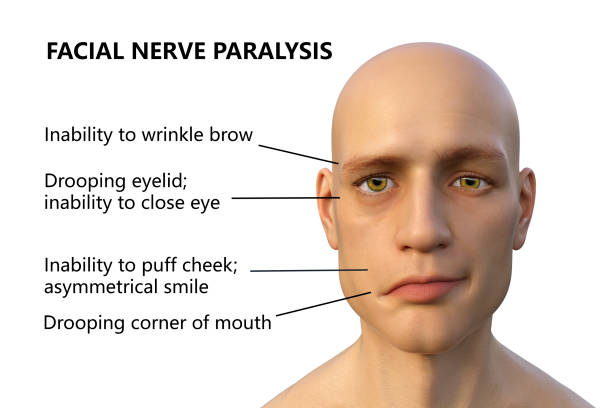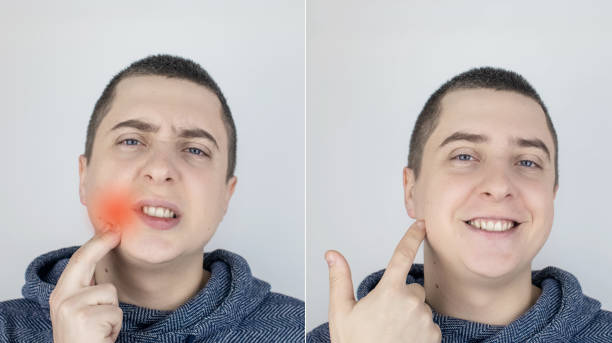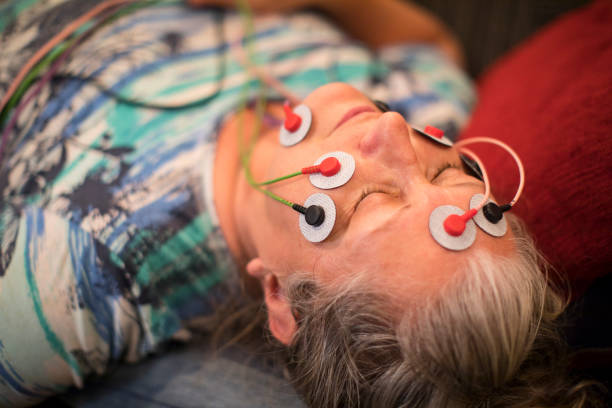When nerve pathways in your face are injured—whether from inflammation, infection or trauma—they can disrupt vital signals that control muscle movement. That’s why Bell’s Palsy can have a profound impact: one moment you’re smiling freely, and the next, muscles on one side of your face refuse to obey. The nerves that animate your expressions are delicate, and any delay in their repair can dim your facial independence.
Dr. Leena Jain, a compassionate Plastic surgeon in Bandra, Mumbai, explains: “Nerves are like fragile electrical cables—you may not see the damage immediately, but the loss of signal causes problems. After two years, your body’s self‑repair mechanisms slow, making further recovery more unpredictable.”
According to global data, nearly 85% of Bell’s Palsy patients see significant recovery within three months; yet around 10–15% face long‑term issues. In India, with a population of over 1.4 billion, an estimated 200,000 people develop Bell’s Palsy yearly, and up to 30,000 could struggle with lasting symptoms. That’s why understanding your recovery timeline is critical.
You’ve waited and waited… but your face still feels frozen. Is hope lost?
2 Years On and Still No Relief?
If two years have passed and you’re still experiencing weakness, asymmetry, or discomfort, it’s essential to understand why full recovery sometimes doesn’t occur.
Dr. Leena Jain, a perceptive Limb Reconstruction surgeon in Mumbai, states:
“Despite early intervention, some patients’ facial nerves can sustain permanent damage or develop scar tissue that prevents proper signal flow. After two years, the nerve’s chance of regaining strength decreases significantly, and lack of nerve supply will cause muscle atrophy and imbalance.”
Here’s why full healing may not have happened:
Nerve Degeneration or Scar Tissue
When nerves are severely damaged, they may degenerate or form scar tissue (neuroma), blocking pathways for regrowth.

Misrouted Recovery Signals
Nerve fibers sometimes reconnect incorrectly, leading to synkinesis—unintended facial movements when trying to smile or blink.
Loss of Muscle Tone from Disuse
Without nerve signals, muscles shrink and lose tone, making restoration harder even when nerves heal.
Delayed or Incomplete Rehabilitation
Facial exercises, physiotherapy, and biofeedback are vital early on. Gaps in treatment can hinder optimal progress.
Alternative Underlying Causes
Chronic infections, autoimmune responses, or rare tumours pressing on facial nerves can mimic or exacerbate Bell’s Palsy.
If your recovery plateaued long ago, it could be due to one or more of these reasons. That doesn’t mean you’re out of options—but it shapes the path forward.
So, are you stuck—or is there still a chance to reclaim your smile?
2 Years with Bell’s Palsy: Can You Still Recover—and How?
The encouraging news: even after two years, recovery may still be possible—though it often requires targeted treatments. Here’s what you can explore:
Botulinum Toxin (Botox) Injections
Low-dose Botox on overactive muscle groups can reduce unwanted movement, allowing underactive muscles to strengthen through rehab. This is useful for synkinesis.

Cross face Nerve Grafting or Baby-sitter procedure
In cases with well‑defined nerve damage, surgeons may harvest sensory nerve segments (like the sural nerve) to graft or re-route healthy nerve fibers toward facial muscles. This nerve graft is connected to the opposite side healthy facial nerve. After about 6-8 months of this procedure, muscle can be transferred.

Muscle Transposition Procedures
Surgeons can relocate functional muscles—such as temporalis or masseter muscles—to replace paralyzed facial muscles, rejuvenating function and symmetry.
Free Functional Muscle Transfer
This advanced microsurgery involves transplanting muscle (e.g., gracilis from the thigh) along with a blood supply and nerve, to rebuild facial movement. It’s one of the most effective interventions after long-term paralysis.
Dynamic Sling or Fascia Lata Sling
A strip of fascia can be used to lift drooped features (e.g., eyebrow or corner of mouth), improving symmetry in a less complex procedure.
Adjuvant Therapies
Consider acupuncture, low-level laser therapy (LLLT), or electrical stimulation—when used under professional guidance, these can enhance nerve activation and comfort.

Dr. Jain adds, “If non-surgical approaches aren’t enough, surgical interventions can offer more permanent solutions. Nerve grafting, muscle transfer, or slings each have their role depending on your specific impairments.”
Each pathway carries considerations—recovery timeline, follow-up, and realistic outcomes—so it’s crucial to consult with an experienced surgeon.
Still unsure whether surgery is the next step—or premature?
Should You See a Plastic & Reconstructive Surgeon Now?
At the two-year mark, it’s time to get a specialized evaluation if any of the following describe your situation:
Persistent facial asymmetry and inability to smile or blink on the affected side
Uncontrolled synkinesis (e.g., eye closure when speaking)
Significant muscle atrophy causing sagging or facial imbalance
Underactive muscles resisting rehabilitation or non-surgical care
A Plastic and Reconstructive surgeon is uniquely trained to assess nerve damage, muscle viability, and your aesthetic balance. They’ll use diagnostic tools—EMG testing, imaging scans, or nerve conduction studies—to map the damage and suggest a treatment plan that fits your goals and energy for recovery.
Dr. Leena Jain, an empathetic reconstructive expert in Bandra, Mumbai, observes:
“Every face tells a story. Even after years, surgery can help rewrite it. By evaluating muscle health, nerve potential, and your daily needs, we tailor solutions—whether it’s a nerve graft for renewed movement or a muscle transfer for more symmetry. Our goal is to restore both function and confidence.”
Before you decide, let’s wrap up what really matters.
Conclusion
Bell’s Palsy can rock your world—but recovery after two years isn’t impossible. While the body’s natural healing ability might slow, modern plastic surgical options combined with dedicated rehabilitation can still transform your outcome.
Start by recognizing why recovery may have plateaued—nerve damage, muscle loss, or scar tissue. Then, work with a professional to explore non-surgical methods like facial exercises, Botox, and supportive therapies. If movement remains elusive, talk to a Plastic and Reconstructive surgeon to learn whether nerve grafts, muscle transfers, or slings could help you feel more like yourself again.
The face doesn’t just express—it connects. And no matter how long it’s been, it’s never too late to rebuild that connection.
You’ve come far. But your journey isn’t over yet.
FAQs
Q1: Is it normal to still have facial drooping after 2 years?
It can be—your muscles may have weakened over time without nerve signals. Long-term asymmetry is not uncommon. A surgeon can assess muscle integrity and explore whether procedures like slings or grafts can even things out.
Q2: Can Botox help after years of Bell’s Palsy?
Absolutely! Botox can relax overactive muscles and help alleviate synkinesis, improving your ability to resume targeted exercises and refined movements.
Q3: What are the risks of facial reanimation surgery after 2 years?
While generally safe, risks include temporary weakness, asymmetry during recovery, minor infection, or the need for fine-tuning procedures. Choosing a specialist reduces these risks significantly.
Q4: Can facial exercises still make a difference now?
Yes—consistent rehabilitation, even years later, may strengthen muscles, improve coordination, and reduce synkinesis. The key is committed, guided practice with a therapist experienced in facial nerve injury.
Q5: How long does it take to see results after reconstructive surgery?
Results vary—nerve grafts may need 6–12 months to show movement; muscle transfers might offer earlier symmetry but require weeks to months to fine-tune. Your surgeon will outline a realistic timeframe based on the chosen approach.
Reference links:
https://link.springer.com/book/10.1007/978-3-030-29582-0
https://pmc.ncbi.nlm.nih.gov/articles/PMC8329401/
Disclaimer: This page is for informational purposes and not for promotional use.
At every step, you’re not alone—and there’s professional help ready to guide you toward renewed expression.
References:
https://www.hopkinsmedicine.org/health/conditions-and-diseases/bells-palsy
https://www.medicalnewstoday.com/articles/bells-palsy-recovery-signs
Disclaimer: The information shared in this content is for educational purposes only and not for promotional use.

